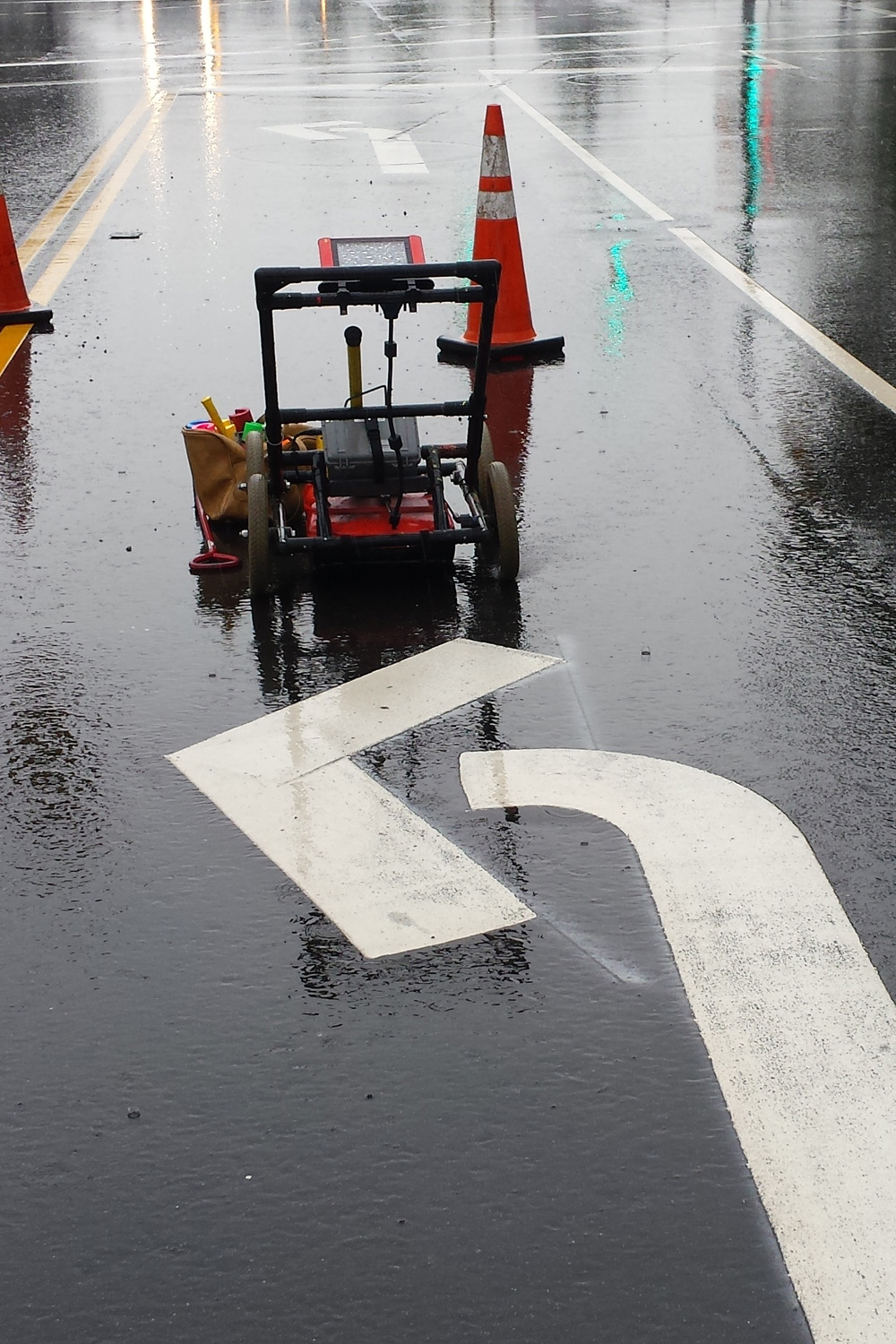GPR – Ground Penetrating Radar
- Home
- GPR – Ground Penetrating Radar

Concrete scanning, otherwise known as a concrete x-ray is a vital service in the world of construction, and at Scan Tech, we offer one of the highest rated concrete x-ray services around today.
What is Concrete Scanning with GPR?Concrete scanning services from Scan Tech are performed using GPR or ground penetrating radar, in order to provide a concrete x-ray for your construction projects and worksites. Concrete x-ray, with GPR, is used to map out the precise locations and the positions of certain elements, both metallic and non-metallic, within concrete. Some of the most common elements found with GPR include tensioning cables and pipes, rebar, conduit, metals and plastic pipes, electrical cables and other surface anomalies.
GPR TechnologyConcrete scanning is one of the most vital services for any worksite or concrete construction project. Concrete x-ray or concrete scanning is greatly improved using GPR. GPR is a radar-based technology that uses antennas in order to help send and receive specialized pulses of electromagnetic energy through the ground or concrete. At Scan Tech, the use of GPR allows us to provide our clients with the very best and most accurate concrete scanning available today!
Where to Use GPR Concrete Scanning Services?GPR concrete scanning is a vital service for a wide variety of different construction projects and worksites. Whether you are working on your own residential home project, a largescale construction site, or a commercial building or property, across NYC GPR concrete scanning will allow you to get an accurate mapping of your property and understand exactly what elements might exist within your concrete!
For more information on GPR concrete scanning and other services, be sure to contact Scan Tech today.
How It Works
GPR equipment is capable of transmitting and receiving electromagnetic waves which are sent into the grounds subsurface or other material, and detects interfaces between differing materials. The interface between these materials are identified by the changes which occur to the electromagnetic waves. These changes can be caused by voids, reinforcing bars, underground utilities (metal or plastic), conduits, or a variety of other items. The antenna transmits and receives a high-frequency electromagnetic impulse (radar wave) into the material of interest, and records the travel time and amplitude of the reflected impulses.


